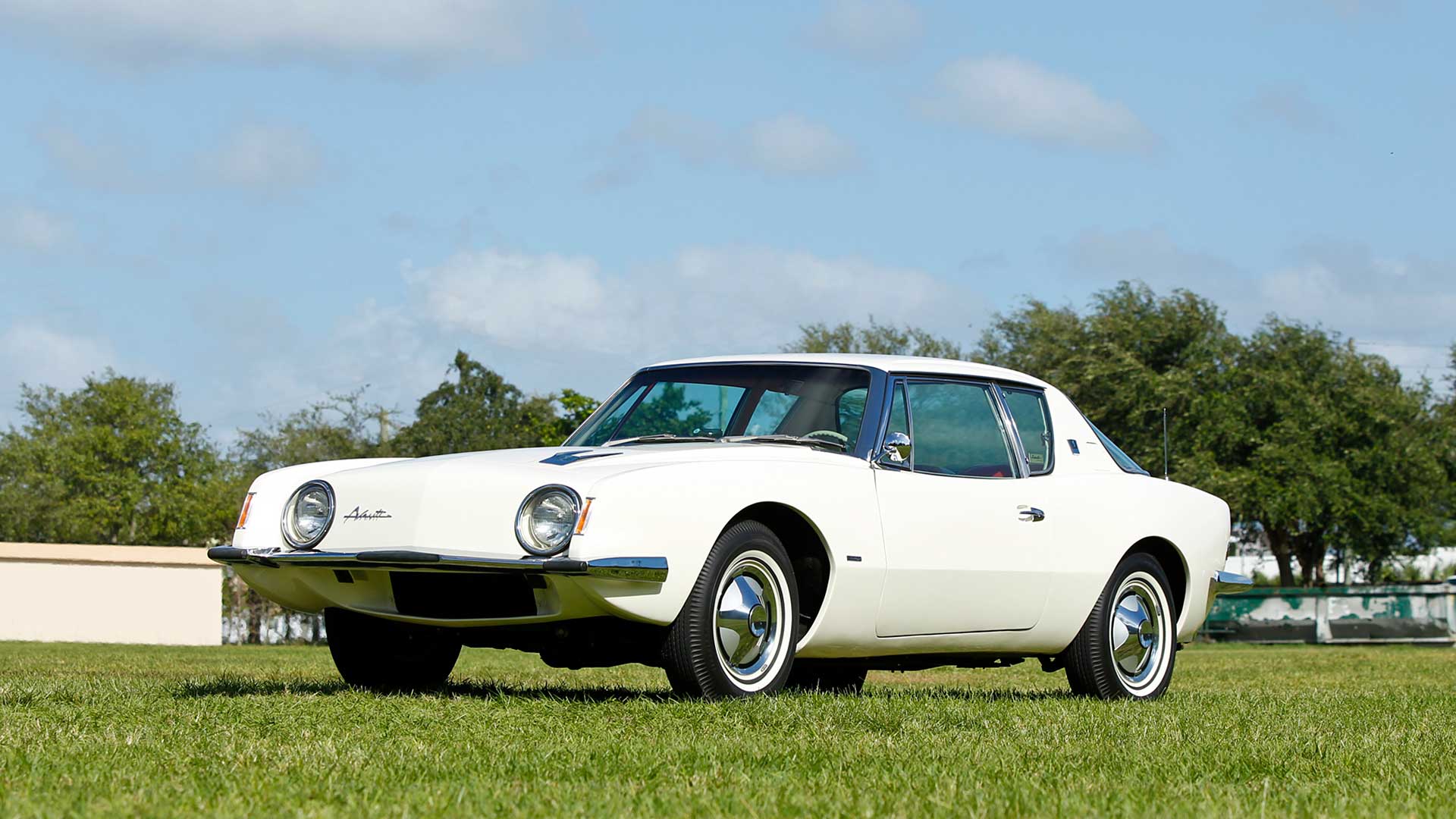

Studebaker was already a 110-year-old transportation company when its radical Avanti personal luxury coupe debuted at the New York Auto Show in 1962. But it was a desperate move from a desperate manufacturer, and it proved too little too late.
As a small, independent automaker in the Fifties, Studebaker struggled against the economies of scale and price wars fueled by the Big Three: Ford, Chrysler and General Motors. Though the company found resonance with budget-minded consumers during the recession of 1958 via its compact Lark models, other domestic manufacturers rolled out competitors shortly thereafter. When the economy rebounded, low-profit small cars weren’t enough to keep Studebaker afloat.
In 1961, the brand’s bold young president Sherwood Egbert championed the idea of a halo car, something to sit atop the marque’s pyramid and cast a divine glow on the lowlier Larks. He hired the celebrated industrial designer and longtime Studebaker accomplice Raymond Loewy to create something that would wow people. Lowey and his team holed up in a mid-mod ranch in Palm Springs, California, and produced the design in record time.
The clean, emotive Desert Modern architecture of geniuses like William Cody and E. Stuart Williams clearly had an influence on the design. As with these designers’ homes, the Avanti had sharp cutlines, deeply contoured compound surfaces, evocative avionic accessories and glass. Lots of glass. The influence continued inside with padded leather, wood veneer and rows of metal dials, levers and switches, giving the cockpit a louche technical atmosphere somewhere between Ming the Merciless’ lair and Frank Sinatra’s wet bar.

Avanti means “forward” in Italian, and the moniker was apt. Rendered in lightweight fiberglass—there wasn’t time in the rushed development process to make metal stampings—lacking a radiator grille opening up front, hosting a downturned tail and rounded rear windshield in back, and staring out at the public through googly arachnoid headlamps, the design was, in a word, polarizing.
“Most people, they either love it or they hate it,” says Jon Myer, who runs Myer’s Studebaker in Duncan Falls, Ohio, and is one of the world’s foremost authorities on the Avanti. (He has owned 40 of them, and is down to 16.) “I just fell in love immediately,” he says. “I was, like, that’s the neatest, most modern-looking car I’ve ever seen.”
“Most people, they either love it or they hate it.”
It caused something of a frenzy in 1962, and orders poured in. For the price of a basic two-seat Corvette, the four-passenger Avanti offered more luxury and practicality, along with comparable performance and enhanced safety. The Avanti was one of the first American cars to feature front disc brakes. Among its other innovations was a built-in roll bar around the rear windshield, and a padded leather dash that wasn’t just attractive, but added protective cushioning in a crash.
Even more compelling was the engine. In the base version, the so-called R1 cars, this was a highly tuned version of the brand’s 4.7-liter V8, rated at a robust 240 horsepower. But the stylish coupe could be had with two supercharged motors, the 290-hp R2 or the extremely rare 335-hp R3. Promotional materials referred to the Avanti as “America’s Only Four-Passenger Performance Car.” Smashing dozens of speed records and commanding a top speed of nearly 170 mph, the car offered ample corroboration. James Bond’s creator, the novelist Ian Fleming, bought one.

“I love the supercharged cars because they were different.” Myer says. “Even up until just recently when a lot of cars came out with supercharging, Studebaker was one of the only companies that did that. And it’s such an easy way to get horsepower out of a smaller engine and still have an economical operation of the car.”
Current Avanti prices bear out Myer’s assessment. According to collector car valuation bible The Hagerty Price Guide, prices for Avantis have risen roughly 30 percent over the past five years—from just over $30,000 to just under $40,000. Prices have been pulled up in part by a stronger market for supercharged cars, a few of which have recently traded at high-end auctions in the high five- to nearly six-figure range. Expect to pay roughly $10,000 more on average for a supercharged example.
What’s buoying the market for these oddballs? The continued interest in mid-century modernism and its mechanical Space Age simplicity is likely one contributor. Also, the Avanti was effectively Studebaker’s final car. After struggles to meet demand, build-quality debacles, and resultant credit and credibility hemorrhaging, Studebaker closed up shop in the U.S. at the end of 1963. This lends the Avanti a coveted a place in the ongoing fetish for innovative “orphan” brands like Tatra, Jensen, Tucker, Amphicar and DeLorean that took risks, charged out ahead of their time—or were simply weird—before failing. (The Avanti continued to be produced, under various manufacturing agreements, until 2006.)
But it mainly comes down to the enduring eccentricity of the design. In his work creating iconic logos for brands like TWA, Exxon, Lucky Strike, Coca-Cola, Air Force One and the U.S. Postal Service, or his streamlined transportation work for Greyhound, Northern Pacific Railway, Harley-Davidson and International Harvester, Loewy always evokes a classic but forward-looking—and distinctly American—optimism. It sets him apart.
“No matter where you go in an Avanti, it’s an ego trip,” says Myer. “We lived in Los Angeles for 33 years, and I drove an Avanti out there from 1969 on. No matter where you took the car—you could drive to any of the real upscale places where they had valet parking—they would fight over who was going to park it. Out there, Rolls-Royces, Ferraris, Jaguars, Lamborghinis are fairly commonplace. But you didn’t see an Avanti very often.”